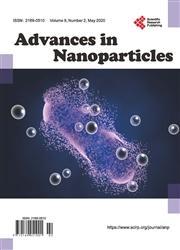Rhodium Nanoparticle-Loaded Carbon Black Electrocatalyst for the Glycerol Oxidation Reaction in Alkaline Medium
引用次数: 5
Abstract
Rhodium nanoparticle-loaded carbon black (Rh/CB) was prepared by a wet method, and its activity and durability for glycerol oxidation reaction (GOR) in alkaline medium were compared with Pt, Pd and Au nanoparticle-loaded CB (Pt/CB, Pd/CB and Au/CB). In the cyclic voltammogram of the Rh/CB electrode, the redox waves due to hydrogen adsorption/desorption and the surface OH monolayer formation/reduction were observed at more negative potentials than the Pt/CB and Pd/CB electrodes. The onset and peak potentials of the GOR current densities for the Rh/CB electrode were ca. –0.55 and –0.30 V vs. Hg/HgO, respectively, which were 0.10 and 0.20 V more negative than the Pt/CB electrode whose GOR activity was the best, indicating that Rh was a fascinating metal for reducing the overpotential for GOR. In the electrostatic electrolysis with the Rh/CB and Pt/CB electrodes, the decrease in the GOR current density in the former with time was suppressed compared to that in the latter, suggesting that the tolerance to poisoning for the Rh/CB electrode was superior to that for the Pt/CB electrode.纳米铑负载炭黑电催化剂在碱性介质中甘油氧化反应中的应用
采用湿法制备了铑纳米颗粒负载的炭黑(Rh/CB),并与铂、钯和金纳米颗粒负载的炭黑(Pt/CB、Pd/CB和Au/CB)在碱性介质中进行甘油氧化反应(GOR)的活性和耐久性比较。在循环伏安图中,Rh/CB电极的氢吸附/解吸和表面OH单层形成/还原引起的氧化还原波比Pt/CB和Pd/CB电极具有更多的负电位。相对于Hg/HgO, Rh/CB电极的GOR电流密度起电位和峰电位分别为-0.55 V和-0.30 V,比GOR活性最好的Pt/CB电极负0.10 V和0.20 V,表明Rh是降低GOR过电位的理想金属。在Rh/CB和Pt/CB两种电极的静电电解过程中,前者的GOR电流密度随时间的下降受到抑制,而后者的GOR电流密度随时间的下降受到抑制,说明Rh/CB电极对中毒的耐受性优于Pt/CB电极。
本文章由计算机程序翻译,如有差异,请以英文原文为准。
求助全文
约1分钟内获得全文
求助全文

 求助内容:
求助内容: 应助结果提醒方式:
应助结果提醒方式:


